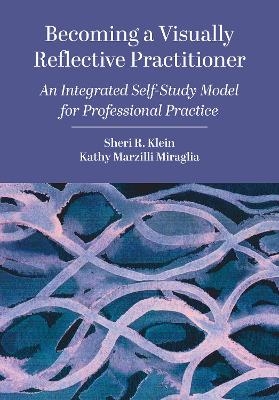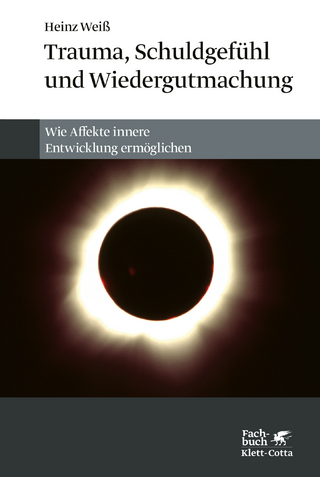
Becoming a Visually Reflective Practitioner
Intellect Books (Verlag)
978-1-78938-486-4 (ISBN)
Professional practice is increasingly becoming more complex, demanding, dynamic and diverse. This important and original new book considers how self-study using arts-based methods can enable purposeful reflection toward understanding and envisioning professional practice. Ideally for visual arts practitioners on all levels, this book presents a self-study model grounded in compelling research that highlights arts-based methods for examining four areas of professional practice: professional identities, work cultures, change and transitions and envisioning new pathways.
Chapters address the components of the self-study model, artistic methods and materials, and strategies for interpreting self-study written and visual outcomes with the aim of goal setting. Each chapter includes visuals, references and end-of-chapter prompts to engage readers in critical and visual reflection. Appendices offer resources and guidelines for creating and assessing self-study outcomes.
The fluctuating nature of professional practice necessitates the pursuit of discernment and clarity that can be achieved through an ongoing reflective practice. Self-study is a systematic and flexible methodology for purposeful reflection on professional practice that embraces dialogic, interpretive, rhizomatic and visual inquiry. Self-study can occur at any level of practice and in the context of work-related professional development, formal study or as a self-initiated inquiry. An arts-based self-study model for visual arts practitioners is explored and focuses on four intersectional components shaping professional practice: professional identities, work cultures and communities, transition and change within professional practice and envisioning new pathways for professional practice.
The self-study model is grounded in contemporary theory, practice and compelling research, and embraces robust strategies for understanding the complexities of professional practice that can include dual, multiple, overlapping, hybrid and conflicting professional identities, tensions within work cultures and unexpected changes within professional practice. Each chapter focuses on a component of the self-study model and an area of professional practice, concluding with references and end-of-chapter prompts that are aimed to facilitate critical reflection-on-practice and the creation of written and visual responses.
With visual arts practitioners in mind, various arts-based methods for self-study are discussed that highlight visual journaling as a key method for engaging in self-study. Interpretive research methods are discussed to guide readers in understanding the phases and processes for interpreting written and visual self-study outcomes. Processes are outlined to help readers determine key insights, themes, issues and questions from their self-study outcomes, how to use them in formulating new questions and articulating new professional goals. Several levels for interpretation are presented to offer readers options relative to their professional needs and aims.
Throughout the text, charts and visuals serve to summarize and visualize key chapter points. Images by visual arts practitioners appear throughout the text and represent a wide range of artistic media, methods and approaches appropriate for self-study. The appendices provide additional resources for enhanced understanding of chapter concepts and key terms, guidelines and rubrics for writing reflections, creating visual responses and using a visual journal in the self-study process.
Primary readership will be visual arts practitioners at all levels. Ideal for university level graduate courses or as a guide for individuals and small groups of practitioners who seek to engage in arts-based self-study as professional development.
Sheri R. Klein, Ph.D., MFA is an interdisciplinary visual artist, educator and scholar with extensive teaching, research, leadership and online course development experience within higher education. Her intersectional research has centred on issues related to visual art, art teacher preparation, self-study and arts-based approaches to reflective practice and professional development. She has presented over 100 workshops, keynotes and lectures nationally and internationally. Her published scholarship appears in cross-disciplinary journals and within edited anthologies. Her edited books include Action Research: Plain and Simple (2012, Palgrave Macmillan) and Teaching Art in Context: Case Studies for Pre-service Art Education (2003, National Art Education Association). An elected member of the Distinguished Fellows of the National Art Education Association, she is also the recipient of the 2018 June King McFee Award from the Women’s Caucus of the National Art Education Association for exceptional and continuous record of achievement in teaching, research and service. Her artworks have been widely exhibited in group and solo exhibitions. She currently teaches online courses with Kent State University (USA). Kathy Marzilli Miraglia, EdD, MAE, BFA, is professor emeritus of art education at the University of Massachusetts Dartmouth. She was awarded the Kathy Connors Teaching Award by the National Art Education Association (NAEA) Women’s Caucus, the Massachusetts Higher Education Art Educator of the Year by the Council of the Massachusetts Art Education Association (MAEA), and the Outstanding Arts Educator Award from the Massachusetts Alliance for the Arts. She is a published author of peer-reviewed book chapters and journal articles, has co-edited the book Inquiry in Action: Paradigms, Methodologies and Perspectives in Art Education Research, co-presented NAEA national webinars, and presented at national and international venues. She served as Higher Education Eastern Division Director for NAEA, secretary on the board of directors for the New England Educational Research Organization, reviewer for Art Education, and the Preservice Division representative to the NAEA Research Commission. She is a practising and exhibiting artist of paintings and pastels.
Introduction
1. Framework and Components of a Self-Study Model for Visual Arts Practitioners
2. Overview of Arts-Based Media for Self-Study
3. Exploring the Complexity of Professional Identity Formation
4. Factors Shaping Professional Identity and Professional Practice in Work Cultures
5. Exploring Change within Professional Practice
6. Issues and Methods for Self-Study Artefact Interpretation
7. Envisioning Professional Practice
Conclusion
Appendices
| Erscheinungsdatum | 17.08.2021 |
|---|---|
| Zusatzinfo | 16 Halftones, black and white |
| Sprache | englisch |
| Maße | 170 x 244 mm |
| Gewicht | 322 g |
| Themenwelt | Kunst / Musik / Theater |
| Sachbuch/Ratgeber ► Gesundheit / Leben / Psychologie | |
| Geisteswissenschaften ► Psychologie ► Allgemeine Psychologie | |
| Geisteswissenschaften ► Psychologie ► Pädagogische Psychologie | |
| ISBN-10 | 1-78938-486-9 / 1789384869 |
| ISBN-13 | 978-1-78938-486-4 / 9781789384864 |
| Zustand | Neuware |
| Haben Sie eine Frage zum Produkt? |
aus dem Bereich


